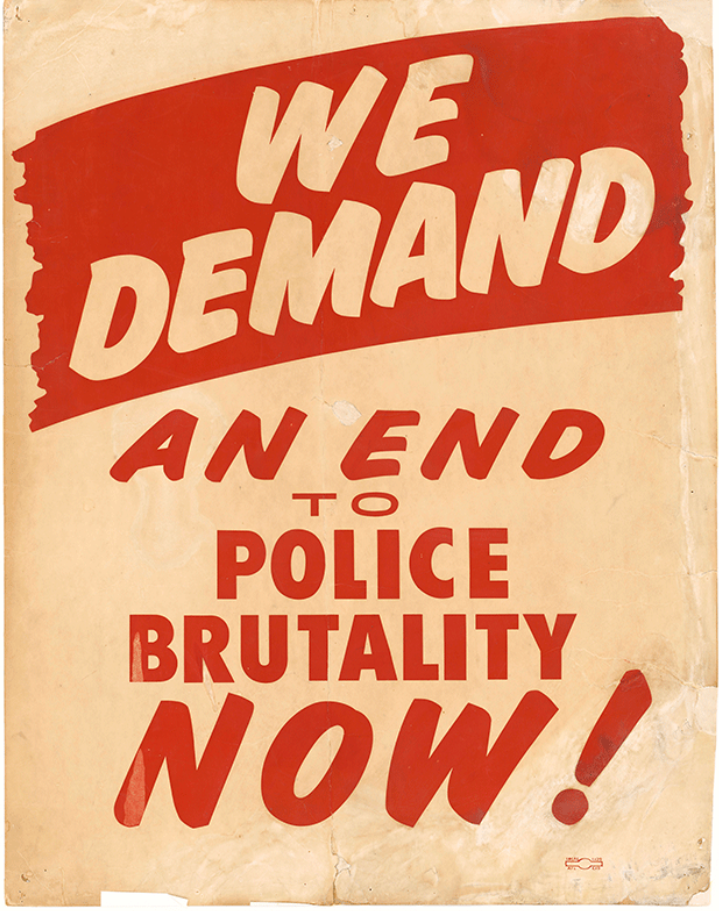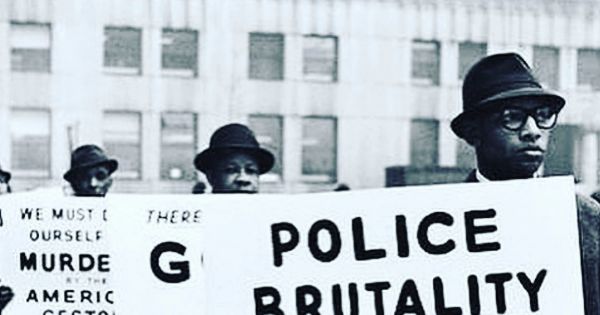I’ve created this article series to help those asking “what can I do” catch up in regards to police brutality and anti-Black racism. I invested my time and energy so I can spare those who are already doing the work from repeating themselves. In this edition we cover part 1 and 2.
Outline of our Article Series
Below is what you can expect in each part of this series:
- Part I: Preparation
- Forethought
- Prework
- Action Page
- Part II: Welcome to Police Brutality
- Accountability Does not Equal Justice
- This is Bigger than George Floyd
- Part III: Riots aren’t new, but they are Complicated
- Gaslighting
- Peaceful Protest
- The teachings of MLK Jr.
- Respectability Politics won’t save you
- Effective Rioting
- Agent Provocateurs
- Timeliness
- Heath
- Part IV: Contributing vs. Distracting
- Property or People
- Quick Fixes Are Bandaids Over a Gunshot Wound
- We’re All in This Together
- It Starts at the Bottom
- This is a Humanity Issue
- All Black Lives Matter
- Part V: Sustainable Effective Action
- Becoming Anti-Racist on an Individual Level
- Localize Your Efforts
- Swarming & Amplifying Others
- Non US Countries are Racist Too
- Covert vs Overt Racism
- So You Want to Become the US?
- Unlearning Anti-Blackness
- Graduation Day
- From Ally to Accomplice
- Continuous learning
- Action in the Workplace
- Performative Woke Workplaces
- Building Systems & Equitable Policies
- Supporting Coworkers
- Becoming Anti-Racist on an Individual Level
Forethought
I find myself becoming increasingly frustrated.
Frustrated that we are going over racism 101 in 2020.
Frustrated hearing scores of people say they are “shocked”.
Frustrated that people are distilling the death of George Floyd into a regional problem, not realizing the grief and frustration they believe is radiating from Minnesota has long been on their own doorsteps. Frustrated by people asking “what can I do” when there are YEARS, decades even, of research, organizing and action planning categorized for every identity group and city laid out and ready for you to DO THE WORK. Frustrated by the scores of so called change makers and do gooders scrambling to jump into action NOW when I have seen Black folks practically plead with those very same people to care before we got to this point.
Frustrated that I do not know what it is like to literally just exist as a human being in America because I am a Black woman. I am frustrated by the people that fail to connect all of the very important dots that already exist to the ones emerging. I am frustrated by people investing their energy in the performance of caring about anti-racism work instead of actually doing anti-racism work, every single day. I am frustrated that it takes people seeing videos of lifeless Black bodies for them to realize that each of those bodies held a human being before its soul was snatched away by systemic racism, because our word is not enough. I am frustrated that people in 2020 are afraid to say “Black” when talking about Black issues specifically and fail to understand that while some oppression does have implications for all people of color, different marginalized groups have their own histories, which means their challenges cannot be solved with your lazy, blanketed Diversity and Inclusion efforts that aren’t equitable at all.
Finally, I am frustrated with having to be afraid, anxious, exhausted, sad and angry, while also calmly explaining why Black people deserve better in the United States and across the world.
With this frustration, I am writing this article broken into a series because becoming anti-racist requires developing a conviction. Having enough information to develop a conviction cannot be boiled down to a couple of bullet points, hence this article becoming a series. I do hope by the end of this series, readers will figure out their role in the movement and become informed enough to educate others. In order to educate others you must also continue to learn and so please see this series as a starting point at becoming anti-racist.
Prework
This article about connecting dots. It is not to regurgitate information that already exists. To build longevity in this work, I am of the belief you need to have your own convictions. Too often people try quick fix solutions and give up because they didn’t take the time to really understand the problem, what strategies have been deployed, and the outcomes. The focus of this section is to ensure you have the prerequisites for the advanced section of future articles where I will connect the dots of how we have gotten where we are now. In preparation, please review the list of topics below and read the corresponding article for any terms or topics that seem unfamiliar:
- Important Basics
- High Visibility Murders Relative to this Article
If you skimmed this list and there was something that feels like a distant memory you kind of learned at some point, do the work, go back and read the article. If you skip to the actions page without understanding context you may feel overwhelmed about where to put your energy. Reading all of this can feel exhausting, but dealing with anti-Black racism feels exhausting too, so I do hope you take the time to read.
Accountability does not equal Justice
George Floyd should be alive. Breonna Taylor should be alive. Ahmaud Arbery should be alive. These are just some of the names from the most recent unjust murdering of Black people at the hands of the state and white supremacy in the United States. There are countless other Black people that should be alive. Charges being brought against those that have murdered these human beings is accountability, not justice. While we do want police officers, and those that think they are police officers, to be held accountable the same way any other person in this country would for the murdering of another human being, what we truly need is justice. Justice is ensuring those that should be alive to defend themselves in the court of law are alive to do so.
What do we want? Justice. When do we want it? Now.
Now that we are on the same page, let’s connect some dots and explore next steps.
This is bigger than George Floyd

Protest sign from 1963 https://www.smithsonianmag.com/smithsonian-institution/long-painful-history-police-brutality-in-the-us-180964098/
Something I am constantly seeing is people asking how they can help with what is happening in Minneapolis while not understanding that this movement did not start, and is sadly unlikely to end anytime soon, with George Floyd. Although I am hopeful there will be an end, it appears for many in America that George Floyd was the final straw on a long history of police brutality in the United States.
People believe that before there were camera phones, the documentation of police brutality was not vast, despite history telling us otherwise. Non-violence was actually strategic and used by protestors to provoke police to be violent. Breaking current laws during the civil rights movement by sitting in whites only sections to force service and integration provoked police, as well as white civilians, to be violent. However, receiving physical violence and not using self-defense was a strategy of bringing about awareness and was an act of resistance. Protestors knew the press would document these instances of police brutality and publish it in international and national publications, thereby bringing awareness to their cause. When there were no clashes and things were calm, the press would leave and not amplify the message of fighting police brutality. Thus, a common misconception is that the way the civil rights protests occurred was seen as peaceful when truly protestors were seen as agitators and trouble makers.

Timeline of White supremacy from Slavery to the War on Drugs and Mass Incarceration https://medium.com/the-new-standard/black-history-a-history-of-permanent-white-oppression-from-1619-to-2016-8bcfa38dfce
For some intimately aware that police brutality disproportionately affecting the Black community is not new and is an extension of institutionalized racism in America, the murder of George Floyd was just one of many traumatizing reminders that not much has changed despite various tactics and decades of organizing. It was a reminder of the continued work there is to do. For those that have not been following along, the murder of George Floyd feels shocking, which underscores the different realities Americans live in.
Deja Vu
For some, the murder of George Floyd felt like a last straw because it felt eerily similar to the murder of Eric Garner. When Eric Garner was murdered by police, people took to the streets peacefully chanting “I can’t breathe,” and both NBA and WNBA players wore shirts with the same phrase, only for the officer that murdered Eric Garner to not receive indictment. It took five years for the officer to be fired. As we saw with that case, a recording did not matter, peaceful protest did not matter, there wasn’t accountability for the officer, and measures were not put into place to ensure justice for others in the future. Due to the mishandling of Eric Garner’s case, his mother, Gwen Carr, recently shared the lack of faith that George Floyd’s murderers will likewise be held accountable. What does it mean as a nation that an alleged $20 forgery or tax evade for allegedly selling loose cigarettes is valued over a Black person’s life?
While on the topic of things hitting close to home, Minnesota, the state where Floyd was murdered by police, is the same state where Philando Castile was murdered less than four years ago in front of his girlfriend and 4-year old daughter during a routine traffic stop. Castile did not violate any laws and calmly informed the officer of his licensed concealed weapon only to be murdered and for the officer to be found not guilty on charges of murder and manslaughter. This highlights the fundamental flaw of looking at each instance in isolation. This highlights the flaw in reducing the resolve to “well we need more cameras on police” when these were well documented instances and the officers were still not held accountable. This highlights the argument that calling for peaceful protest and waiting for justice leaves out a lot of nuance and erases all of the times people have indeed protested peacefully for cases of the same nature and cases of brutality in the same state only for the cycle of police on civilian violence to be repeated. Like Carr, Philando Castille’s family lost faith in the criminal justice system, which is why so many people are jaded and angry. Castile’s case in particular also highlights the double standard that the second amendment is a right for some Americans but clearly not Black Americans, especially with the NRA’s failure to amplify Castile’s story.
Justice for some
Revisiting the notion that justice is the ability to have your day in court, let us remember how domestic terrorist Dylann Roof was apprehended and treated after violently murdering Cynthia Hurd, Susie Jackson, Daniel Simmons, Sharonda Coleman-Singleton, Ethel Lance, Clementa Pinckney, Myra Thompson, Tywanza Sanders and DePayne Middleton-Doctor. Dylann Roof, who was armed and dangerous at the moment of his arrest, was peacefully hand-cuffed by police officers, taken to Burger King where officers purchased him food and escorted him to an aircraft where officers outfitted him with a bulletproof vest for protection. Meanwhile,George Floyd and Eric Garner were unarmed when murdered and they were not able to make it to court to defend themselves. Although, Philando Castille spoke calmly and was only stopped routinely, not for conducting a premeditated mass-murder, he was found to be so intimidating that an officer shot him several times in front of his girlfriend and 4-year old daughter. Dylann however, was able to make it to his day in court to defend himself. Justice is having the ability, no matter the crime, to make it in front of the judge and have a fair trial, but as we see here, that privilege is not afforded to all.
It took months for the arrest of Ahmaud Arbery’s killers, Gregory and Travis McMichaels. Their arrest was due to pressure from protestors, lawmakers and activists. The police department was aware of Arbery’s murder but did not arrest his murderers until receiving the aforementioned pressure. Glynn County Police Department did not originally believe there was probable cause to arrest these men on an actual murder under the defence of protections for deadly force. It took even longer for Williams Bryan Jr., the man that followed and filmed the murder of Arbery, to be arrested. Likewise, Derek Chauvin was not immediately arrested for the murder of George Floyd, and even when he was, he has received a $500,000 bond. The other three officers, as of June 2, 2020, have not been arrested although Floyd was murdered a week ago. I raise the delay in these arrests to underscore yet another double standard. The reason Arbery was allegedly chased down was because the McMichaels expressed a belief Arbery was trespassing. The reason Floyd was being arrested was due to a belief he forged $20.
By delaying arrests for known crimes due to something still being under investigation, the state is communicating it in fact does not need to hold people in jail while an investigation is ongoing. Often, regular civilians that are arrested, which are disproportionately Black and Brown people, must go to jail to await their trial, and in some cases are not offered a bond. There are many cases where individuals spend years in jail for crimes they are found innocent for all because they continue to await their trial. Additionally, the crimes such as $20 forgery and trespassing being treated more seriously than murder due to ones affiliation with the state communicates a prioritization of property over people.
What to expect in Part III
What is rioting and when is it actually useful? How can we successfully end riots? We will explore these questions as well as, how to effectively contribute as opposed to distract from the movement in the next part of this series. With that I leave you with this parting gift.


